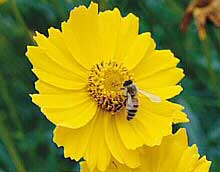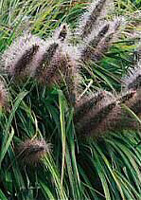 |
|
 |
|
The production of seed from the union of pollen and egg is called sexual reproduction. In nature, sexual reproduction mostly happens between plants of the same species. If pollen from a rose lands on a stigma from a sunflower, pollination cannot take place.
But many kinds of plants have developed ways to prevent self-pollination (the pollination of a flower by pollen from that same flower) and ensure cross-pollination, which involves two different parents. For example, some kinds of fruit trees, like plums, produce sterile pollen. This means that another kind of plum tree must be near by, and flowering at the same time, so that bees can take the pollen from one kind of plum flower to the other in order to successfully fertilize the plant. If the flowers on a plum only receive pollen from the same kind of tree, it will not set fruit (which is the seed). Most holly (Ilex) plants are either male or female, and both sexes must be present for the female to bear fruit.

A bee visits coreopsis blossoms. Photo: Darrow M. Watt.
Cross-pollination is also possible between some species; the resultant offspring are called hybrids, and they may or may not look like either parent.
Because sexual reproduction allows for mixing of genes from different parents, it is important as a source of genetic variation. Such variation can lead to the development of plants which are better able to survive and adapt to environmental changes.
Flowers are usually colourful and
show up on a plant, so that they attract the creature that
will carry out the pollination. Grasses do not have colourful
flowers, because they are wind pollinated. This means that
the pollen is spread by the wind, and no insect is needed.
This is one of the reasons that so many people get hay fever
when the grasses are flowering and lots of grass pollen is
floating about in the air!

In contrast to sexual reproduction, asexual or vegetative reproduction gives us offspring that are genetically identical to the parent. Examples of asexual reproduction include propagation by cuttings or layering or by division.